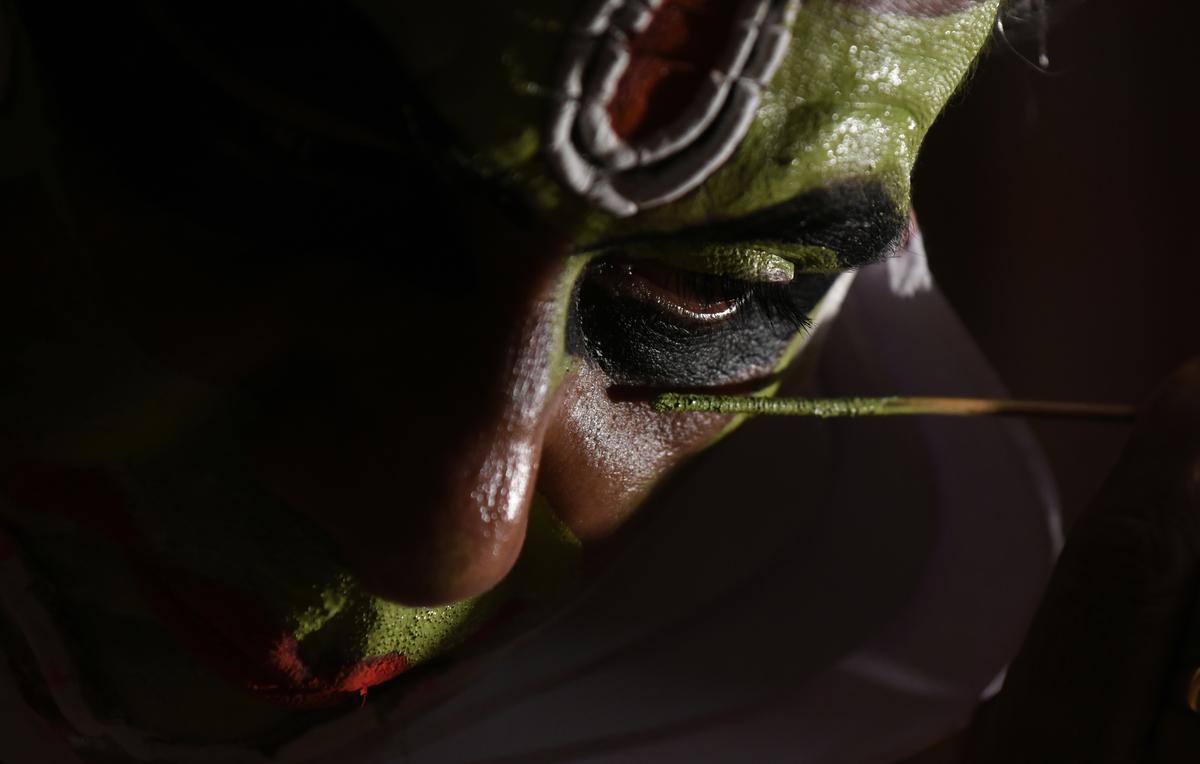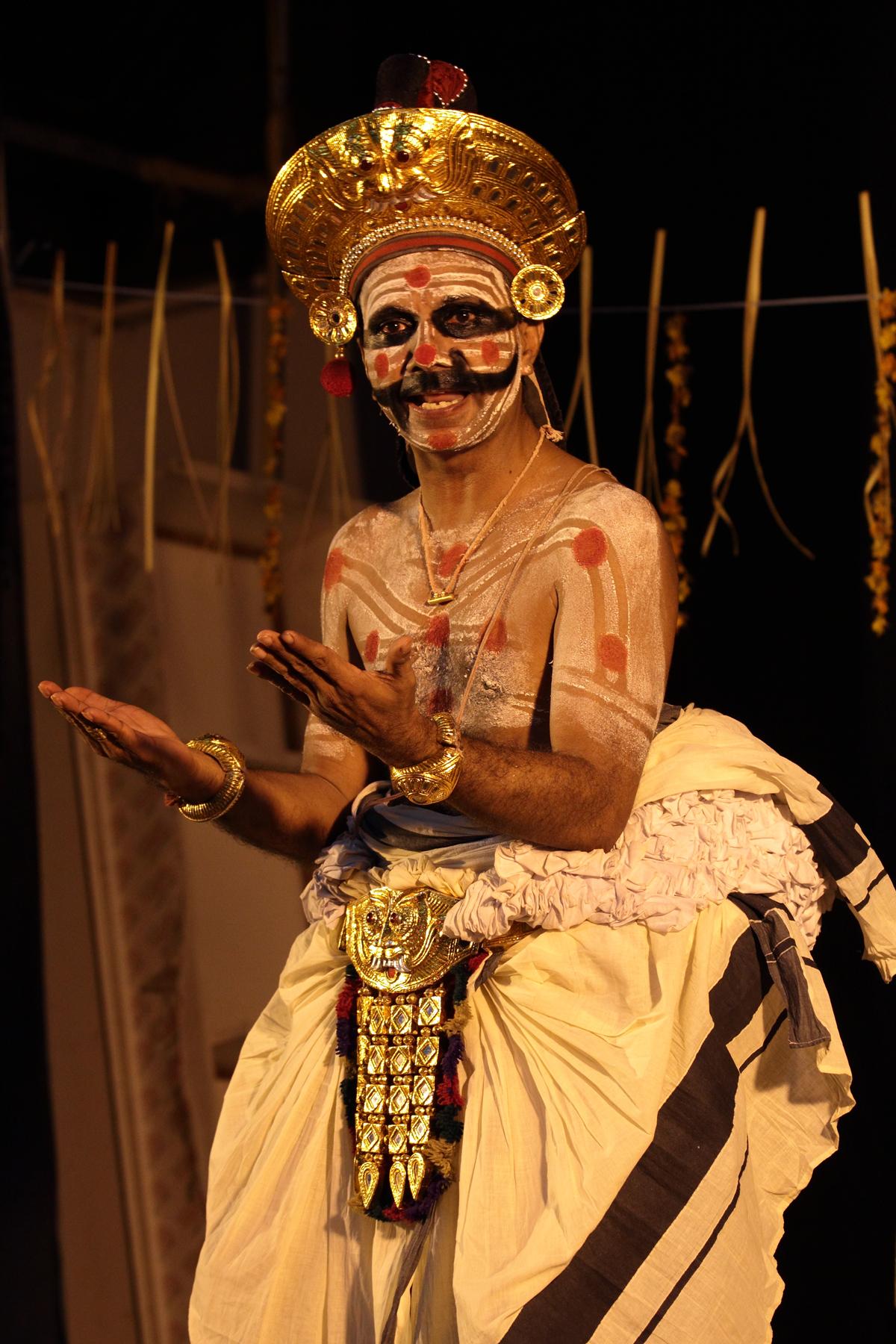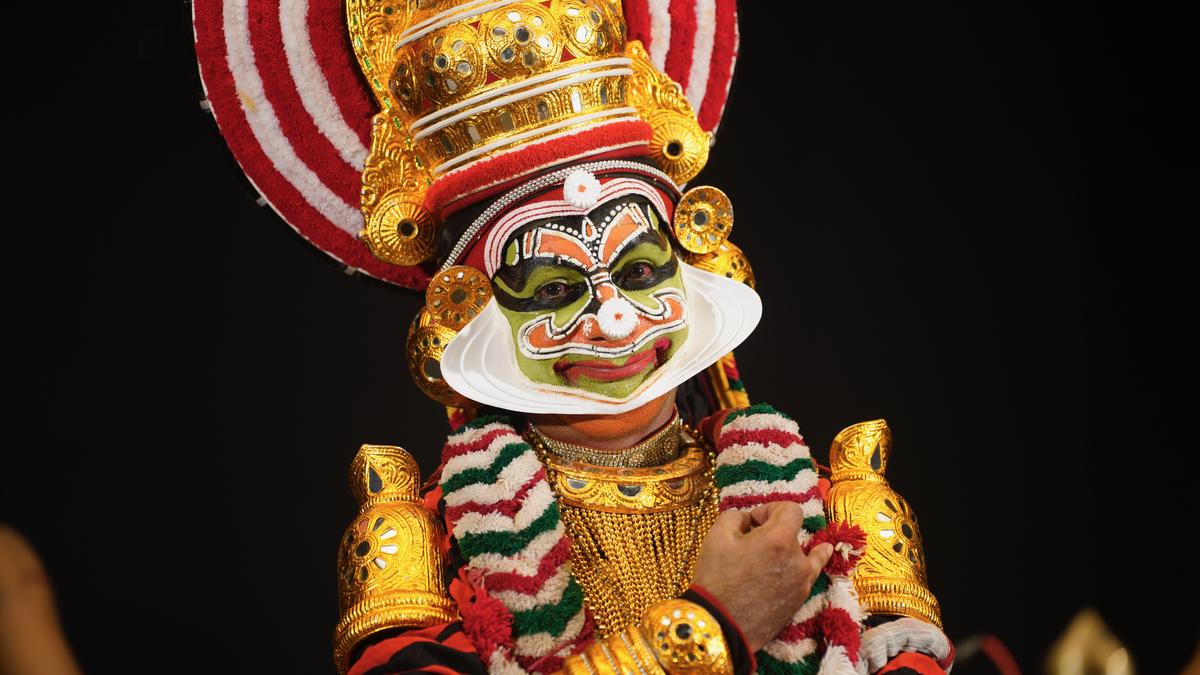Margi Sajeev | Photo Credit: Special Arrangement
Margi Sajeev Narayana Chakyar, as the lovelorn Ravana, remains glued to his peetham (stool) for more than three hours and slowly, using only his eyes and face, describes the ten facial expressions of Ravana as he reacts to Sita’s beauty. As Surpanakha, with his melodious monologues in a vulgar form of Malayalam, his performance evokes sympathy for the demoness. Any role that is physically demanding or requires long periods of concentration is safe in the hands of this versatile actor.
A day-long event was organised in Sajeev’s honour on his 60th birthday on June 2, which was an occasion for the Koodiyattam community to celebrate the art form as well as express concern about its future. A common complaint from many gurus and speakers was the failure of artistes to attract new students, especially boys, due to lack of patronage.
Sajeev, who has spent 45 years as a Koodiyattam actor and guru, says little has changed in this regard. “I still remember the day we moved from Muzhikulam to Thiruvananthapuram with my younger brother Madhu. It was soon after my arangetram at the age of 14. This was when Margi started Koodiyattam classes and my father was appointed as the teacher. We were excited to move to the big city, but at the same time, like all Koodiyattam practitioners, we wondered if this art could provide a livelihood.”

Margi Sajeev applying makeup before a performance at Ammanur Chachu Chakyar Gurukulam in Irinjalakuda | Photo credit: Thulasi Kakkat
Sajeev laughs as he and his brother started learning typewriting and shorthand as a backup option with half-hearted permission from their gurus. “However, today I am happy to say that we never had to depend on it. This question of uncertain future still haunts Koodiyattam students. For instance, my daughter Anjana, who is a Koodiyattam artiste, is currently pursuing her graduation. It is not easy to attract new students, while some drop out and some take up other professions.
Sajeev, currently the head of Koodiyattam in Margi Thiruvananthapuram, was trained in the traditional gurukula by his father Kochukuttan Chakyar and his uncle Ammanur Madhava Chakyar.
When Sajeev was growing up, Koodiyattam was undergoing a major change. This ritual art form, once performed only in temples, has now moved into the performance arena. Once taught only in gurukuls run by Chakyar families, the art began to be offered in training institutes when Kerala Kalamandalam, now a performing arts university, first started classes in Koodiyattam in 1965. With this, Koodiyattam also ceased to be the exclusive domain of the Chakyar and Nambiar communities.
Margi Sajeev Narayana Chakyar, Margi Akhil and Kalamandalam Sindhu in the roles of Mayaram, Mayalakshmana and Sita respectively. | Photo courtesy: Jawaharji K
According to Sajeev, there have been major changes in the world of Koodiyattam – in the way it is taught and performed, in its costumes and in the new stories that are being adopted. Ammanur, a visiting professor at Margi, followed the gurukula system. “There was no curriculum. We would take up a new story or role only when our gurus felt we had mastered what was being taught. For example, we did Nityakriya, an introductory pure dance sequence, for three years.”
By the time Sajeev became a teacher at Margi, the situation had changed. “Now students have to strike a balance between studies and Koodiyattam training. At Margi, we adapted to this by starting classes on weekends from 9am to 4pm. Later these were reduced to forenoon sessions. Koodiyattam became secondary to formal education.”
But Sajeev is realistic and says such changes are inevitable. “We must adapt to the changing times without compromising on the underlying values of Koodiyattam.”

Margi Sajeev as Narayana Chakyar Koundinya | Photo Credit: Jawaharji K
Sajeev believes that most of today’s young Koodiyattam artistes are talented and committed. “But they lack opportunities. Most Koodiyattam programmes are two or three hours long. And young artistes are exposed to a limited repertoire. There are very few places where the longer form of Koodiyattam is performed.”
However, Sajeev is happy that the theatre at Muzhikulam offers full performances with the support of scholars led by Professor David Shulman of the University of Jerusalem. “The Sangeet Natak Akademi is also doing some great work through its Koodiyattam Centre in Thiruvananthapuram. We need to preserve this only surviving Sanskrit theatre,” says Sajeev.
